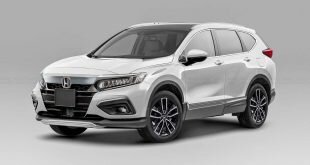How to Find the Best Entry-Level or Used SUV for Your Family

The key to shopping for an SUV is to know what is considered the best level of amenities and spaciousness today. These demands are not meant to drive up the price of your new ride. Instead the goal is to know the price you paid is bringing you maximum benefit.
Safety Systems
Some SUVs are not offering all of their safety equipment on the entry level SUV. That really isn’t acceptable.This is your family’s safety, and you should expect a new or used SUV to have an automatic braking system that includes forward collision warnings and pedestrian warnings. You may be able to find one that also watches for cyclists.
Furthermore, you should expect a lane warning system with corrective assistance and a blind spot monitor. Finally, you should have a rearview camera (required since 2018) and a rear cross traffic monitor. A road departure system with corrective assistance is still quite rare; however, you can find this on a new Honda SUV as well as used Hondas dating back a few years.
Driver Assistance
Not all new SUVs will also have adaptive cruise control. This feature adds the forward braking capability that it needs to adapt to traffic patterns. If you can find this on a used SUV or an entry-level new one, it is 100 percent worth it. You won’t find true automatic driving systems on entry-level SUVs, but you can look for them in used ones and perhaps find a surprising value.
Connectivity Matters
Many entry-level SUVs don’t have a touch screen, Apple CarPlay or Android Auto. This isn’t just about entertainment. It is safer for you to have as much hands-free tech as you can. However, if you have to sacrifice the touch screen on choice in favor of a better safety package on another, then safety should win out.
The SUV should have WiFi connectivity. That’s a crucial feature for family entertainment. Even if you don’t want to subscribe to it now, you may want to do so in the future. It would also be hard to sell the vehicle some day if it doesn’t offer this basic capability.
Don’t Judge by the Label
Compact, small, medium and large are unregulated terms that may mean nothing in terms of how big the cabin actually is. A small SUV, the Honda CR-V is larger than some midsize rides. Engineers managed to create 40 inches of legroom in the backseat. You’ll find rivals with 34 inches, a really tight squeeze. Then there’s the issue of cargo space. The CR-V can claim 40 cubic feet with the seats in place. This is more than some big two-row SUVs, such as the Grand Cherokee (36 cu.ft.).
Just so you know, three-row SUVs will probably have less than 20 cubic feet of standard cargo space. The only way to get a large cargo hold on a three-row vehicle at a reasonable price is to step over to the Honda Odyssey (32.8 cu.ft.) or Toyota Sienna minivan (33.8 cu.ft.).
So take a list of expectations with you when shopping for an SUV and make sure you get the most for your automotive dollar.

